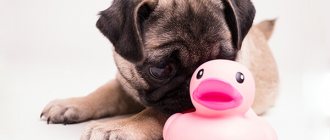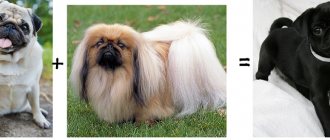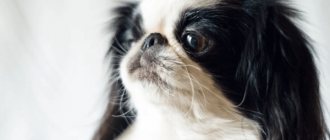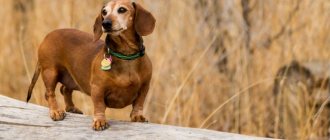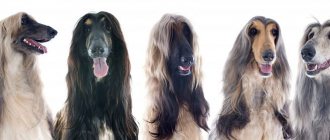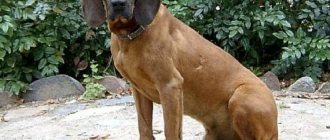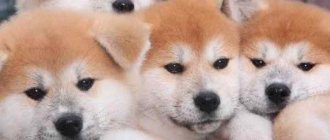- Dogs
The pug is a Chinese dog breed famous not only for its unusual appearance, but also for its good-natured and calm character.
The advantages of this breed are that pet owners include their non-aggression and the absence of the need to walk their pet for a long time. The main disadvantages are considered to be a tendency to obesity, problems with the eyes and respiratory system. Many people are also concerned about dog snoring and excessive salivation.
Owning a pug is not a cheap pleasure . In addition to material costs, this dog needs maximum attention every day.
Interesting Facts
The funny expression on the face of representatives of this breed leaves no one indifferent. The breed was developed thanks to human efforts. These animals have delighted others for many centuries with their originality and enthusiasm.
Miniature Pug Puppy
Even in ancient China, many emperors kept dogs as pet companions. Even at that time they were treated like family members. There is even information that representatives of this breed in ancient times had their own mini-palaces and guards.
Queen Victoria was a famous pug lover. At that time, there was a practice of cutting the ears of these animals. It was the Queen who banned this procedure. This is the only breed to receive a bachelor's degree. This significant event took place in 2009. The winner of the degree was a pug named Chester Ludlow.
Pugs are also noted as brave rescuers. In 1572, a pug saved the Prince of Orange from an assassination attempt by waking him up in the middle of the night at the height of the Eight Years' War of the Spaniards against the Dutch.
History of the pug breed
Pug
Although Pugs are visually somewhat reminiscent of English Bulldogs, Boxers and the now extinct Bullenbeissers from Germany, their origins are actually to be found in the East. Moreover, you will have to dig deep, because the first images of short-faced dogs that have survived to this day on ancient artifacts and mentions of them in historical documents date back to the 6th–4th centuries BC. The famous ancient Chinese philosopher and politician Confucius speaks of them as companions of the nobility traveling on chariots.
For a long time there was an opinion that another popular Chinese breed, the Pekingese, originated from pugs. However, genetic studies allow us to confidently say that family ties are built in the reverse order: long-haired dogs appeared much earlier, their direct ancestors were Lhasa Apso or Chemjo Apso, who guarded Tibetan monasteries, and pugs are either a cultivated natural mutation or the result of crossing with others short-haired breeds. Perhaps this is why Pekingese were considered exclusively imperial pets for centuries. But not everyone could afford to have pugs. This was the privilege of courtiers close to the ruler. The living conditions for the miniature dogs were truly royal, they ate much better than most ordinary subjects, often had their own chambers, servants for walking and personal security. For attempting to steal such a dog, severe punishment was imposed, including the death penalty.
Researchers suggest that the first European who had a chance to see the unusual pets of Chinese nobles was the Venetian merchant and traveler Marco Polo, who lived for seventeen years in a country exotic for a European. His “colleagues” from Holland and Portugal ended up in the Celestial Empire only two centuries later, during the era of the Great Geographical Discoveries. They brought home not only silk and spices, but also the charming Lo Chiang Tse, soon renamed to the easier-to-pronounce “pug.”
Pug puppy
The sturdy fawn-colored creatures with their sweet little faces and big eyes immediately attracted the attention of the aristocrats of the Old World. However, they played a special role in the fate of the Netherlands: the vigilance of the faithful Pompey helped William the Silent avoid death at the hands of an assassin at the height of the war for independence from Spain. Subsequently, the revolutionary leader of the Low Countries became the founder of the royal Orange dynasty, and the favorite accompanied the owner even after death - a sleeping dog was masterfully carved at the feet of the marble figure of the Dutch founding father on the lid of his sarcophagus. Pugs became a symbol and living mascot for William's heirs.
Through their efforts, the dogs came to Britain, where they quickly gained popularity among the local nobility, and subsequently dispersed to the royal courts of continental Europe. Queen Victoria, who doted on her pets, did especially much to revive interest in the breed among the British in the second half of the 19th century. Back then, “British” pugs were taller, leaner, with an elongated muzzle and had an exceptionally light color. But, as a result of the plunder of the Beijing Forbidden City during the Second Opium War by officers of the English and French armies, previously unknown black individuals came to the West. The latter are still quite rare and therefore more expensive. In general, pugs are an example of a breed whose popularity is fairly stable.
Valuation in money
Now we just have to find out how much a pug costs. Its cost also depends on what class the dog you choose belongs to. This is the main parameter for assessing a dog in monetary terms. As the analysis showed, the gender or color of the pug does not matter here. The price is set by class. Pet-class puppies are much cheaper than dogs intended for breeding or exhibitions.
Slight downward price fluctuations depend on the geographical location of the breeders. However, often they themselves offer delivery of puppies to the place completely free of charge.
In Moscow and other large cities, prices range from 250 to 750 dollars. Accordingly, the initial amount is the cost of pets that do not participate in breeding or exhibitions. The final one is for future champions.
In central Russia and the south, the cost of pugs for show does not exceed $450, and the countdown starts at $160. This dispersion of numbers is not at all due to the fact that puppies in the provinces are worse. It is simply much more difficult to realize offspring in remote and sparsely populated areas.
At almost half the price of a breeding nursery, you can buy a good puppy from a private owner. Also, the price increases as the puppy grows up, if it has the mark and pedigree of the RKF.
Please like it if you liked this article and don't forget to share it with your friends.
Write a comment on our website, it is very important for us to know your opinion.
Origin story
It is still not known for certain where dwarf pugs came from. The only thing that is clear is that representatives of this breed, according to current canine rules, are considered a waste. That is why the dogs never received official recognition.
Mini Toy Terrier (dwarf): description of the breed
As for ordinary pugs, their homeland is China. The first mentions of them date back to the 5th century.
Note! Mini Pugs should not be confused with American Elk Pugs, since the latter were bred in the USA by crossing with Pekingese and subsequently received official recognition.
American pug lo shi
Dwarf
There is no officially recognized dwarf or mini pug by the World Canine Federation. You cannot take part in exhibitions with such a dog. A dwarf pug is the result of a genetic glitch or anomaly. It is impossible to predict in advance whether there will be miniature individuals in the litter. It is known for sure that two dwarf dogs will give birth to standard puppies.
Also, the appearance of a mini variety is possible when there are more puppies in the litter than usual. The bitch instinctively discards underdeveloped puppies. They most likely will not survive without outside help. But with proper care, there is a high probability that they will turn out to be miniature dogs.
Another possibility of the appearance of a mini-individual is the development of a genetic disease in an apparently healthy baby - pituitary dwarfism. It is expressed in the cessation of growth of the puppy.
First vaccinations
When the dog is 2 months old, you can give it its first vaccinations. 10 days before vaccination (sometimes 2 weeks, which is agreed with the doctor), the puppy is given anthelmintic drugs.
Important! On the day the vaccination is scheduled, the animal should feel good, healthy and vigorous. You cannot vaccinate a sick dog!
After vaccination, the dog is not washed for a week or 10 days. After 2-3 weeks, the 2nd vaccination is given - the puppy should be healthy and feel good. 2 weeks after this is the incubation period, when the pug still goes to the litter tray; washing the pet is also not recommended.
The next vaccination occurs at the age of 11 months (closer to 1 year), and then the pug is vaccinated annually. It is important not to forget to get vaccinated on time!
Pugs can be distinguished as one of the easiest dogs to care for and have a pleasant character. But remember: babies are very curious and will run after you everywhere. Therefore, it is important to constantly clean the house, remove hair (pugs shed a lot), and not leave small objects on the floor that the pet could swallow. Select a quiet place for the puppy, where there is no draft or heat, then the baby will be comfortable in his new home.
Rules of care and maintenance
Pugs are notorious beggars who are also prone to being overweight. Their diet must be closely monitored. From childhood, accustom your puppy to a bowl so that he eats only from it and does not pick up food on the street. Never feed your dog from the table and ask guests not to do so. Monitor your pug's weight. Obesity is a common disease in this breed. The ideal weight of an adult girl is 6 kg, a boy is 8 kg.
Walking times for your pug vary depending on its age and time of year. From the age of the first vaccination and the end of her quarantine to 6 months, you should walk for 30 minutes in the morning and evening before feeding, and after eating, go to the toilet for 5 minutes. A six-month-old puppy should be walked twice a day for an hour.
It would be great if you could find your pet a walking buddy so they can run and play together. This will promote socialization and a calm attitude towards animals.
The pug needs long walks, but you should not overwork the dog.
In winter, the pug should be dressed in warm overalls or a coat. If you walk for more than 30 minutes in damp and frosty weather, and your dog is freezing, you can take him in your arms under your jacket.
In the summer heat (more than +20C) you can’t go for a walk; you can only go out early in the morning and late in the evening. At other times, you can only go to the toilet for 10 minutes. Carry water for your dog and a cloth to wet it and wipe your dog's paw pads and face.
In spring and autumn, in rainy, damp weather, pugs are especially susceptible to runny nose. Your pet should wear a raincoat and eat vitamins.
- At an early age, ears are sometimes glued or tied so that they grow correctly and beautifully. This does not cause discomfort to the dog, but it creates a cute appearance. They should also be cleaned as they become dirty using a cotton swab with sea buckthorn oil or hydrogen peroxide.
- The eyes are a very sensitive part of the muzzle due to their position. In summer, mucus accumulates in the corners, which must be carefully cleaned with cotton wool soaked in water or an isotonic solution. If the eyes begin to fester, use tetracycline ointment. Make sure that your pug is not exposed to drafts or headwinds, as this can lead to eye inflammation.
- The tail is also fragile, never untwist the tail ring.
- The fold above the pug's nose constantly collects everything - dust, mucus, food. It should be cleaned regularly with chlorhexidine at a concentration of 0.05%. If your dog scratches his fold, contact your veterinarian.
Pugs shed a lot. Frequent brushing and a furminator, a special grooming tool, can help here.
Description of the breed
Despite the fact that the breed does not have recognized standards, breeders still try to ensure that dogs meet general parameters. The main difference between representatives of this breed is size. Pugs grow in height from 17 to 21 cm. They weigh from 2 to 5 kg.
Dwarf spaniel (mini cocker): description of the breed
The body of the animal is miniature, proportional and compact. The head is proportional to the rest of the body. The upper jaw protrudes slightly. The ears are set high and hanging. The neck is short and wide. The paws are powerful and strong. The coat is short, the tail is curled in several curls.
The colors of ordinary pugs can be different. The most common are gray and all shades of brown. Mini Pugs usually come in two and three colors.
Interesting! The most common colors are fawn, silver and black.
Description and breed standard
The appearance of the dog is stocky, very small in size. The height of an adult American dog, depending on gender, ranges from 19 to 23 cm. Body weight is also small: from 2.3 to 6 kg. Else Pug puppies are born weighing 400-600 grams.
| Breed standard (CKC) | |
| Head | Small compared to body size |
| Scull | Wide and flat |
| Jaws | The top protrudes slightly above the bottom |
| Neck | Short and thick |
| Rib cage | Wide, well developed |
| Ears | Medium, set high, hanging, not docked |
| Eyes | Large, round, dark in color, available in blue or green |
| Tail | Twisted, lies on the back |
| Limbs | Set wide and parallel, short |
Read Who is stronger and smarter: Alabai or German shepherd
Short Americans have short, smooth coats with little undercoat. The color is not regulated and any color is allowed: from completely black to completely white. In general, the dogs look funny and are pleasing to the eyes of adults and children.
The difference between a loxie and a regular pug
The main and obvious difference between lo-shi is its size. If the American dwarf pug can weigh a maximum of 6 kg, then classic pugs do not weigh less than 6 kg. The height of a regular one reaches 30 cm, and a mini one reaches a maximum of 23 cm. The color of a classic can only be black, silver or fawn; for a horse, almost any color is allowed.
Interesting Facts
- Although the breed is Chinese, its revival and current development are associated exclusively with America;
- There are only 3 known breeders in the US that breed lo shi;
- The population of short American pugs as of 2018 numbers 146 animals.
Just a few "or's"
If you are ready to give part of your time to your future pet, to care for it, feed it, walk it, treat it, then you only have to clarify a few possible options for choosing a dog:
- male or female;
- the puppy is small or older;
- color - black, beige or apricot;
- price - expensive or cheap pug.
But in any case, pug puppies presented for selection must be healthy, well-fed and active.
The main differences between a mini pug and a regular one
Pug and French bulldog: which one to choose?
The mini pug is practically no different from its larger brother. These dwarf animals have exactly the same mask on their face, folds that go from the forehead to the flattened muzzle.
The differences are primarily in weight and height. Regular pugs weigh 6-8 kg and grow up to 33 cm in height. A dwarf pug weighs from 2 to 5 kg and grows no more than 21 cm. But such miniature sizes do not prevent dogs from reaching heights and becoming loyal and devoted friends. Otherwise, no differences were found.
Pug: breed standard
Pugs are quite compact, up to 6-8 kg, with a proportional, square body. The height of the dog at the withers is up to 32 cm, although this is not so strictly stated in the rules. The first thing that immediately stands out is the large head with a flattened muzzle, a weakly defined bridge of the nose and large, wide-set eyes of a dark color.
Thin soft ears fit tightly to the head, and the mouth seems to be slightly distorted. The pug's neck is thick and strong, but with a pronounced scruff. The stocky body is muscular and well developed, with a broad chest, high ring tail and strong, straight legs.
Thin and smooth yellowish coat lies close to the skin. There are also black and silver pugs. But light-colored dogs must have a dark mask and markings.
Changing teeth
Replacing baby teeth with molars is the main indicator of growth and development of puppies.
| 1 month | There are canines, incisors, first and second false teeth. |
| 2 months | All baby teeth grow in. |
| 3 months | Changing the central incisors. |
| From 3 to 5 months | The middle incisors change. |
| 4 to 6 months | The edges (outer incisors) change. |
| From 4 to 5 months of age | Changing fangs. |
| 5 - 6 months | Replacement of false-rooted teeth. |
| 7 months | Molars grow (42 permanent teeth). |
Slower growth of teeth, their weakness and fragility indicate improper development of the animal, the reason being the lack of vitamins A and D and mineral salts in food.
Character, abilities and skills
Mini pugs are very friendly dogs by nature. Ideal for large families and considered companion dogs. They are lenient towards other animals, but if there is a conflict, they can even fight with the enemy.
Pugs are easy to train and rarely show aggression. Animals quickly become attached to people and feel extremely unpleasant when separated. They are playful and love to sleep.
Important! A small pug will be a wonderful friend for a child and is also ideal for older people.
Silver dwarf pug
Character and intelligence
What Pug dogs are known for is their character. devotion to its owner and kindness to others. In terms of devotion, this dog can only be compared with a Chihuahua. Therefore, pugs suffer greatly when they are without an owner for a long time, and this is very noticeable in the dog’s appearance and behavior.
When leaving, you can leave your pet with a close friend or relative. She will quickly become attached to a new person and will not experience stress due to the absence of her owner. Pugs make contact even with strangers who are kind to them.
If the dog is not happy with something, it begins to bark loudly and for a long time. When everything is as it should be, she will sneeze and calm down.
Pugs are calm. They are not the type of dog that will bark unnecessarily, thereby causing a nuisance to you and your neighbors. But the dog can snore loudly, wheeze and emit gases. And, of course, snore loudly. Louder than any other dog breed, despite its rather small size.
At first glance, pugs seem lazy and slow. But they are full of energy. These dogs constantly follow their owner around the house or on the streets. And if he wants to play with him, the dog will be ready right away. But at the same time, a dog of this breed will not be a good choice for overly active owners who run in the morning.
Attitude towards children and others
Almost all people who have pug pets describe these dogs as friendly and cute. At an early age, they love to play a lot and for a long time, but with age, pugs prefer quiet rest to active ones. They are ideal for small children, for whom they can be a plush toy. If your pug is playing with your baby, cuddling and petting them, you need to keep an eye on them. After all, a child can accidentally harm the dog’s eyes. In general, the dog can move away from the child himself if he behaves carelessly with him.
Distinctive features
Despite their toy appearance, they are loyal friends who have a strong attachment to their owner. In case of the slightest threat, they are ready to engage in a fierce battle with the enemy without any hesitation.
They are very open and friendly , able to establish contact with both humans and other smaller brothers living with them in the same territory. They will definitely interfere in everything that interests them. They will not miss the opportunity to dangle underfoot. They will always announce their presence with a loud bark.
Proper care
When choosing a mini pug dog, the description of the breed and the features of their content must first be carefully studied. Despite the fact that caring for these animals is completely simple, the dogs need to be provided with certain living conditions.
Pugs need to have their nails trimmed regularly, their teeth and ears checked daily, as well as their face wiped between the folds and their coat groomed. Folds on the face of animals cause a lot of discomfort, especially in the hot season, so their condition needs to be monitored especially carefully. Otherwise, irritation, pain and rashes on the skin may occur.
You need to brush your dog once a week. Bathing your pet is required as needed.
How often should you wash and comb?
It is important to know that, despite their short and soft coat, mini pugs shed heavily. They need to be combed out. It is optimal to do this several times a week using a comb with rounded teeth.
The frequency of the dog's bathing depends on the dog's activity, how often it goes for walks and whether it sleeps in the owner's bed. If she rarely walks, 1 - 2 baths every six months will be enough. More active dogs need a bath once every three months.
In addition to bathing, a dog of this breed needs to wipe the folds on its face using a special lotion or Vaseline. This must be done in order to avoid inflammation. First, wipe the fold under the nose, then gradually rise higher, completely lifting the folds.
Where is the best place to buy
You can buy a pug puppy in three places: the market, the Internet and the nursery . Previously, the poultry market did not cause much criticism and was successful due to the low cost per animal. Today, in 90% of cases, for relatively little money on the market you can buy a puppy with hidden diseases or abnormalities. Unscrupulous traders often keep their pets in unsanitary conditions and do not give vaccinations required by age. If you are lucky in this regard, then do not be surprised if the dog, when it grows up, turns out to be not quite like a pug.
A safer place to buy animals is the Internet . The obvious advantage is that the little puppies are kept in a home environment rather than spending their days in a dirty market. In addition, you will have the seller's contact information. Through these types of advertisements, healthy and well-groomed pug puppies are sold, but without a pedigree. This fact is the reason for the low cost compared to the price of puppies in nurseries.
But it is best to purchase a dog from a specialized kennel . An experienced and conscientious breeder takes care of future offspring from the moment of conception. In addition, you will have the opportunity to see the parents, which will give you the opportunity to imagine what your dog will look like in the future. In the nursery you can find out in detail who a pug is and all the features of caring for this breed. You will be able to contact the breeder for advice in the future.
And most importantly, along with the puppy you will be given official documents that will allow you to participate in various exhibitions. But when choosing a nursery, be careful. And in this segment there are scammers who, under the guise of an elite nursery, hide a conveyor belt where bitches are bred at every heat, and puppies are kept in cramped cages, without much concern for the health of the dogs.
Pug price
You can buy a pug in several ways, either through an advertisement from private hands or in a specialized nursery. The first option is significantly cheaper, but there are risks that the new owner will be deceived.
A puppy in a pug nursery will cost the owner more, but here he will be presented with all the necessary guarantees, namely information about vaccinations, pedigree, and information about the pug’s parents.
Due to the specific structure of the muzzle, the pug often has problems with the eyes
In addition, it is possible to consult with nursery staff in case of possible problems. How much a pug costs depends largely on the purpose of purchasing a puppy; if it is needed for participation in dog shows and further breeding, then its cost will be 25-30 thousand rubles. If you just need a pet dog, then the price of a pug in a kennel will be 12-15 thousand rubles; from private owners, buying a puppy will cost 5-7 thousand rubles.
Health and life expectancy
Mini dogs have the same life expectancy as representatives of larger breeds. If you provide proper care and proper nutrition, they live between 12 and 15 years.
As for diseases, they are exactly the same as those of classic representatives of the breed. The most pressing problem that pug owners most often face is the tendency to obesity. To avoid trouble, you need to carefully monitor your diet.
Dogs also often suffer from eye diseases, which can develop slowly and unnoticed, so when the first signs appear, you should immediately seek qualified help.
Miniature black pug
Story
The short breed of pug has been known for quite a long time. Back in 551 BC. dogs lived at the court of the imperial families of China.
Only people of the highest rank could start a breed. A terrible punishment awaited the common people who dared to own these animals.
After a while, when the Celestial Empire began to dynamically conduct foreign economic activity, dogs began to be raised in Europe.
Because of this, the specific appearance of the breed began to disappear. And only because of the incredible efforts of the American breeder Rebecca Mons, this unique subspecies of pugs did not disappear from the face of the earth.
The breeder managed to develop an ancient breed by crossing pugs with Pekingese.
The American achieved that this subspecies of the breed was recognized in the USA.
The appearance of the dogs is very similar to a regular pug: a short head and paws, a flattened nose and high-set ears.
The main difference from a regular pug is its short legs. The dog's character is quite cheerful, and he will be an excellent companion for children. The animal is also very trainable.
How to choose a puppy
In our country, most advertisements for the sale of dwarf pugs are not true. Often, in pursuit of profit, dishonest breeders sell ordinary representatives of this breed. They are passed off as dwarfs, so you need to approach the process responsibly. You should only purchase a puppy from trusted nurseries.
When choosing a puppy, you need to pay attention to the following features:
- paws, which should be thin;
- non-standard bite;
- short back.
Mini pugs at birth should weigh no more than 400 grams.
Purebred miniature pugs
What is the price
Show-class puppies cost between 30 and 60 thousand rubles. For a breed-class pet you will have to pay from 20 thousand rubles. Representatives of the pet class cost between 8 and 15 thousand rubles.*
What to name a mini pug
Choosing a nickname is an important stage in the life of every dog owner. In this matter, everything depends on your own imagination and individual preferences.
The girls can be called Melissa, Greta, Chapa, Basie, Pearl, Sosna, Vanessa. For boys, you should pay attention to such nicknames as Oscar, Tucker, Dicky, Roxy, Stevie, Teddy, Keychain.
Advantages and disadvantages
The dwarf pug is not particularly picky. He can live in a small apartment or in a private house. Even a child can handle it.
Gastrointestinal disorders and a tendency to allergies may occur. Otherwise, the mini-pug is a problem-free pet. Despite his tiny size, he still needs training - it will make him obedient.
The disadvantage of keeping such a dog is the need to control nutrition, because obesity will negatively affect the animal’s joints. Therefore, he is given only food or a small amount of raw meat with porridge or vegetables. Your veterinarian will advise you on the exact diet.
What to pay attention to
If everything is more or less clear with the place of purchase, then it’s time to deal with the “product” itself. First of all, we note that pugs come in three classes: show, breed and pet .
First class is the most expensive , but such dogs can take part in prestigious exhibitions. They usually have an elite pedigree and at least four generations of titled ancestors.
If you want to breed, then your choice is a girl or a boy of breeding class. Strong and healthy pugs will bring excellent offspring, for which you will definitely be able to find a buyer.
Do you just need a loyal friend and a cheerful partner? Then give preference to a pet-class pug, especially since you will have to pay much less for it than for puppies of the 1st and 2nd classes . Well, even if his ears are not quite standard and his tail is a ring, but he is an obedient and smart dog that your whole family will love.
Now you understand how to choose the right pug puppy according to the existing classification. Now let's look at the documents. When purchasing a baby, you must be given a “Puppy Metric”, which indicates:
- floor;
- Date of Birth;
- parents' names;
- pedigree numbers;
- address and initials of the breeder;
- the brand of the puppy (it must match the brand on the dog itself).
When considering the differences between a dog and a bitch, it is impossible to highlight the advantages of either gender. Therefore, whether a boy or a girl will move into your house is a purely personal decision. It is clear that a male dog may disobey his owner if another pug or a girl in heat passes by. But this is a disadvantage of all males. But a pug bitch will never exchange her owner for a male running past.
Also ask what birth date your chosen one was born in. The first puppies are usually healthier. With 8-month-old teenagers there will, of course, be less hassle, but at this age the dog should already be vaccinated and accustomed to using the toilet outside, but it is difficult to say how well the breeder has developed this skill in the puppy.
What to feed?
Despite their noble origin, these dogs are not too picky about food and eat extremely sloppy. While eating, Luo Shi often dips his muzzle into the offered treat, so after eating it is better to check whether pieces of food are stuck in the folds around the nose .
It is necessary to feed only high-quality food designed specifically for small breeds. It is worth looking for food with a high calcium content in the diet to prevent dysplasia and deterioration of dental health.
Make sure your dog always has access to clean water.
Lack of exercise and overeating can lead to obesity. Your pet may look hungry after eating, but you shouldn’t believe it , because this is just a clever attempt to beg for something else.
Features of feeding
It is not advisable to mix industrial food and meat.
The daily norm is 4% of the pug’s weight. Do not overfeed or give food from the table. This will lead to obesity.
Lean meats, sea fish, some vegetables or porridge are suitable. If industrial feed is used, then it should be at least premium or holistic. Specialized diets are prescribed only by a veterinarian.

